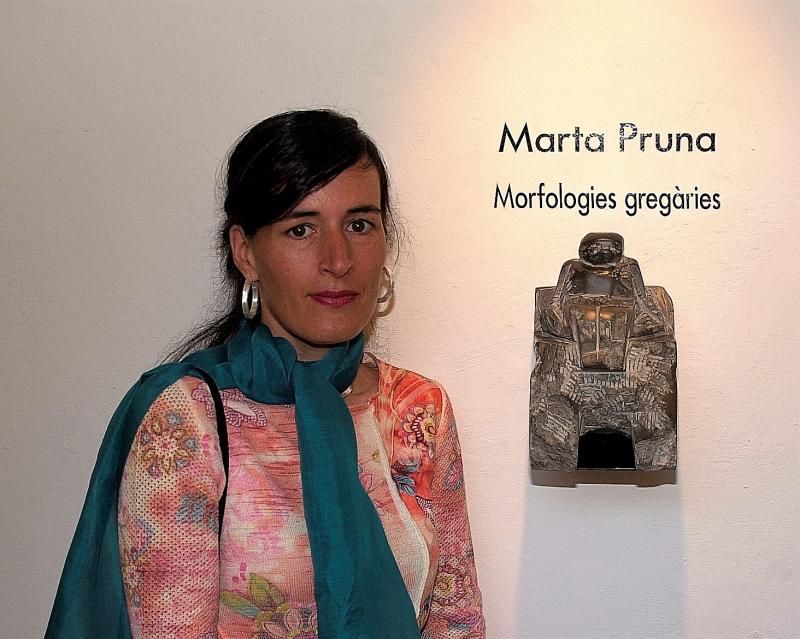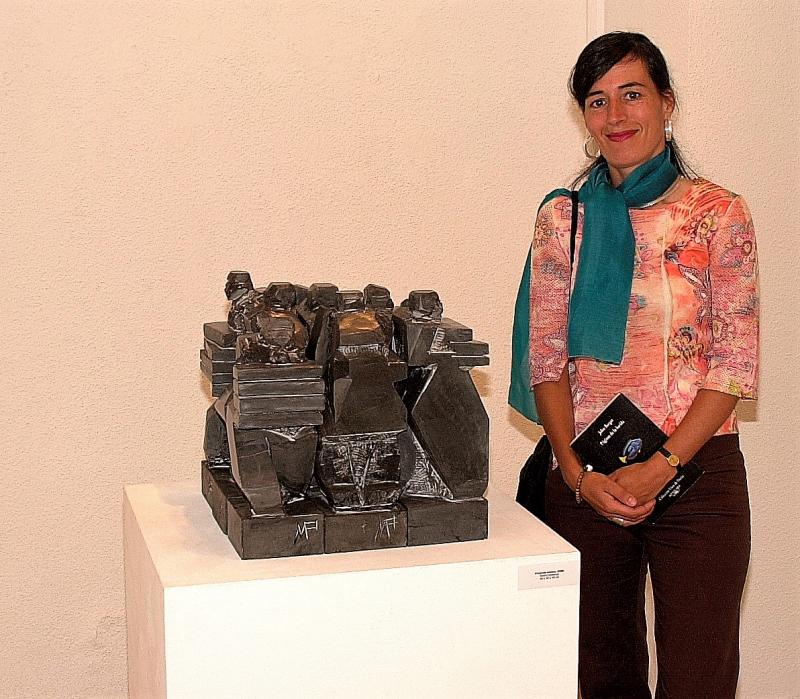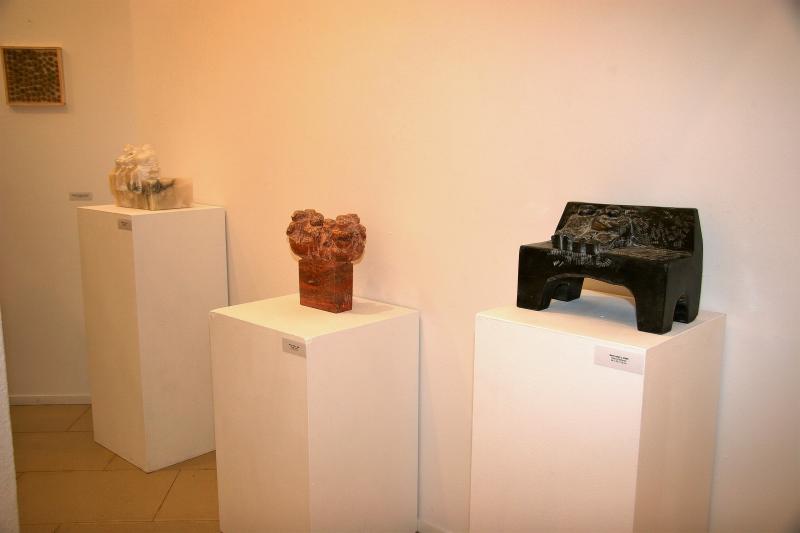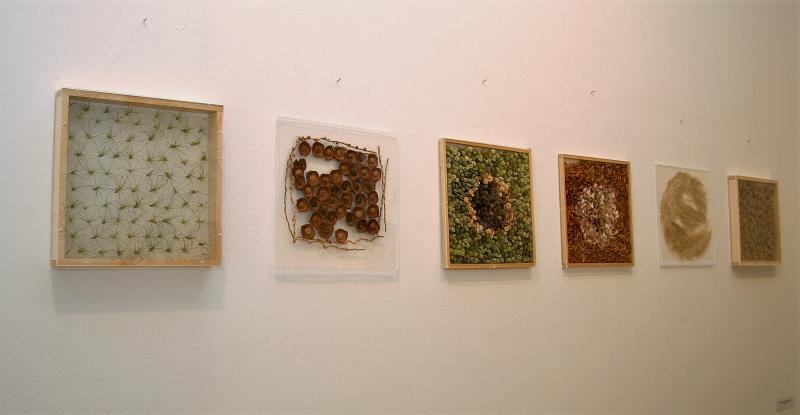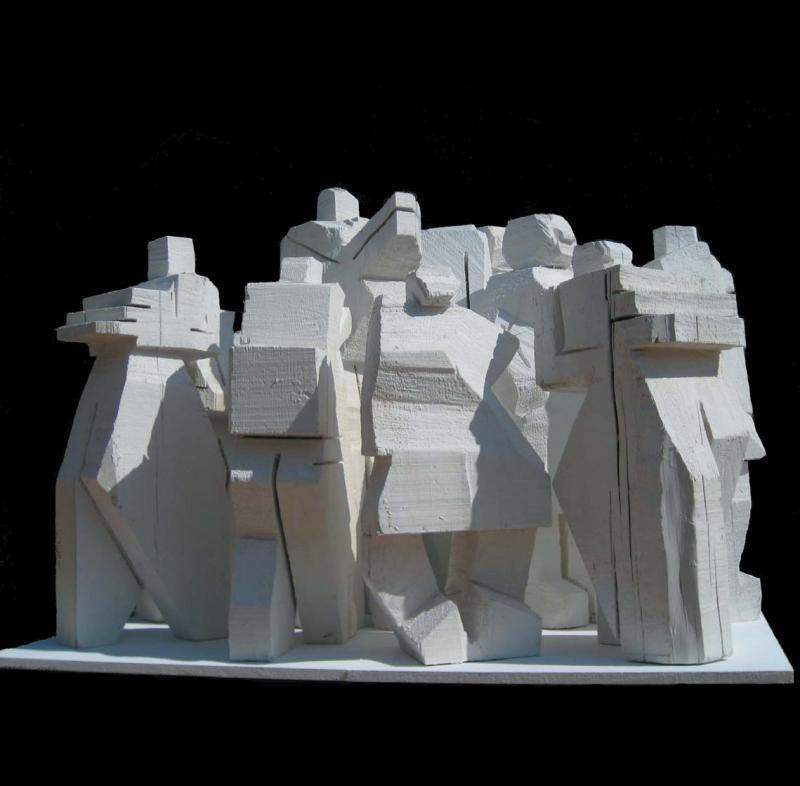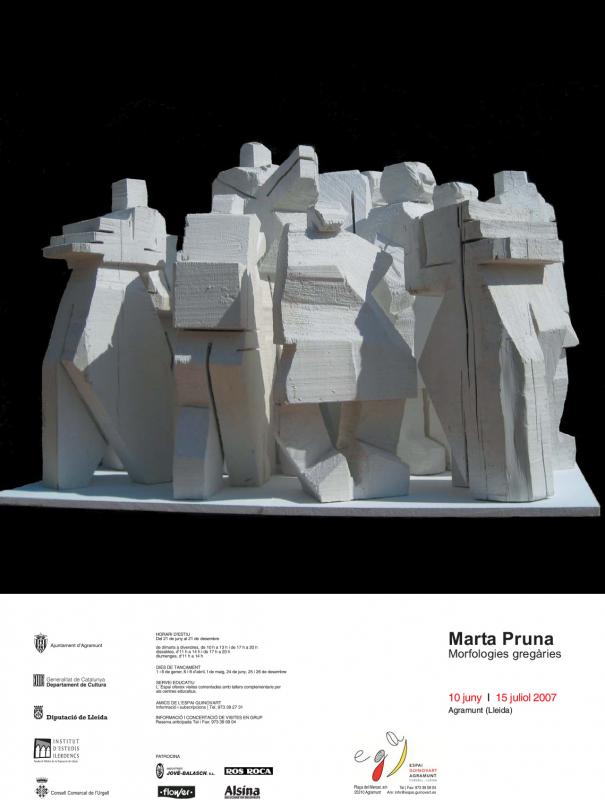Marta Pruna
Gregarious morphologies
Gregarious morphologies
Whether it is in the tapestries that the moss generates or in the disposition in which plant seeds are presented, either in the social organization of some insects or in the crowded order of the supporters of a sports stadium, nature - and, therefore, also human nature - we are generally presented in group structures in which the individual inevitably oscillates between the identification in their own particularity and the gregarious integration into the group, between the Demand for their individuality and the tendency towards antagonizing integration.
It is in this dialectic, contradictory and schizophrenic - which, on the other hand, has contributed to fill the divans of psychologists and psychoanalysts - that the work of Marta Pruna (Barcelona 1970) is made consciously or unconsciously: the elaboration of Individual forms - morphologies - that are diluted in group structures that, in their function of absorption and integration, become gregarious. That is to say: the individual forms and their particularities, although clear, are subordinated to the group and are only recognized and recognizable according to the demands of the group.
Doctorate in Fine Arts at the University of Barcelona, where he trained as a sculptor, Marta Pruna has participated since 1993 in numerous individual and collective exhibitions and several symposia on art in Catalonia, Austria, Belgium, Holland, Portugal, Switzerland , Japan or China.
Since it was installed in Cervià de les Garrigues in 2001, its link to the territory has been progressive. His work, essentially in stone and wood, has developed a forcefulness that manifests itself in the abrupt and precise cutting of the piece and refers to the totemic primitivism: "Every time, in each project (...) in a new stone ( ...) back to the origin, "reflects, significantly, in a text written in 2006.
In these gregarious Morphologies, however, the Totems-traditional representation of the divinity-are contextualized to the detriment of their individuality, they integrate the group and form an essential part, they lose their particular identification and become gregarious: Individuals, such as The elements of nature are no longer the function of the group and its identifying features are subject to the discipline, demands and needs of the group to which they belong.
Carles M. Sanuy
On the occasion of my first visit to Espai Guinovart I decided to start collecting various elements of nature to study their expressive and plastic possibilities with the intention of incorporating them into the creative process and perhaps reaching to expose them someday in this space. This is how the Matacrilates that complement this sculptural exhibition and which select various objects collected in the gorges of Cervià, which relocates in watertight compartments to catch time, the miracle of a moment of life. This is my small tribute to Josep Guinovart and to his interest in landscape and nature.
The exhibition, however, is structured around a central piece - the Chess group - made up of seventeen pieces of large format that are presented randomly grouped together with the aim of providing a whole range of recompositions that bring us closer to play, to risk and, therefore, to freedom; and that in the short distance they reach architectural dimensions, as if they were buildings that rise up and stop the movement. At a distance, density, impenetrable mass, deliberate concentration predominates. The white color is the light that is filtered between the pieces and interacts as a unifying element of the set. The contours and shadows delimit the periphery of an essentially dense, full space and loaded.
The trajectory until arriving at this installation is basic and coherent. The fans of the groups began more than ten years ago, with the readings of Delleuze Berger and W. Benjamin; with the Doctorate and the Erasmus in Frankfurt ... The influences of work in Portikus, the criticism of E. Miralles, or Jean-Cristophe Ammann, among others. Also, the two years of drawing at the Mozarteum Orchestra of Salzburg and at the Palau de la Música are key to understanding the group movement.
The Life Train, are the boxes of Metacrylate that fly through space. Always four, like repeating a series or sequence where no element is equal to the others and at the same time it resembles it, and where again the light - scattered between the cracks - acts as a unifying element. The wax - also white - presents a state of fragility, purity and spirituality that is also projected in the red color and impregnation. The train is the awareness of probabilities, the multiple possibilities of decision in a lot of parallel worlds.
Marta Pruna

